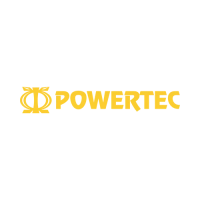Model
1000
Installation and Operation Manual
Page
1
OFFICIAL 6/1/2001
I
II
I
NTRODUCTION
NTRODUCTIONNTRODUCTION
NTRODUCTION
WHAT IS A GENESIS SERIES BRUSHLESS DC DRIVE ?
The GENESIS series of drives were developed to operate very large Brushless DC motors. Large BLDC
motors were first made by POWERTEC Industrial Corporation in 1987.
Small BLDC motors have been in use for many years. The GENESIS series were the first drives that
were produced to operate really large BLDC motors. They range from fractional Horsepower (HP) to 300 HP.
Brushless DC motors and drives offer three significant benefits to the user:
1. Absolute Speed Control
2. High Efficiency
3. Low Maintenance.
ABSOLUTE SPEED CONTROL
The AC induction motor must “slip” in order to develop torque. “Slip” means that the rotor slows down
when loaded. The amount of slip varies with the load on the motor. When the motor load changes from no
load to full load, speed may change as much as 50 RPM. You must use extraordinary means to employ AC
motors in speed sensitive applications.
Traditional brush-type DC motors have “IR Losses.” These cause the speed of the motor to vary as the
load changes. “IR Losses” account for speed changes of as much as 2% of base speed. You can limit speed
changes to about 0.5% with a very expensive tachometer. That is still 8 or 9 RPM from no load to full load.
You must use extraordinary means to employ brush-type DC motors in speed sensitive applications.
Brushless DC drives and motors do not change speed when the load changes. This is true with the
standard product, right out of the box! This is very good for speed sensitive applications.
HIGH EFFICIENCY
AC induction motors are fairly efficient when operated across the line on plant power. Using an AC
variable speed inverter to control the speed of the AC motor adds power losses as heat in the drive. It also
creates additional losses in the motor. Total losses in the AC system approach 10% at the 100HP level.
Brush-type DC motor systems at 100 HP are relatively efficient, but the losses total about 8%.
Losses average less than 6% in Brushless DC systems at the 100 HP level.
At 100 HP, each percentage of losses is 750 watts. That’s 18 Kilo-Watt-Hours (KWH) per day, or about
6,500 KWH per year. A 2% increase in efficiency results in over $1,000 a year in direct energy savings.
LOW MAINTENANCE
An AC motor running on a variable speed AC drive produces a lot of heat. The motor needs lubrication
more often. It needs extra bearing changes. Heat also shortens the life of the motor.
Brush-type DC motors require frequent brush replacement. They need commutator service and field and
armature rewinding. They also require frequent lubrication and bearing changes due to heat.
Brushless DC motors need greasing, but oversize bearings and low heat output allow long bearing life.
Maintenance on a Brushless DC motor is minimal.
POWERTEC offers the GENESIS series for general purpose industrial use.
POWERTEC also offers a complete line of servo-duty rated drives and motors covering the range from
1/10 to 300 HP.
QUICK START - Page 3 TABLE OF CONTENTS - Page 5

